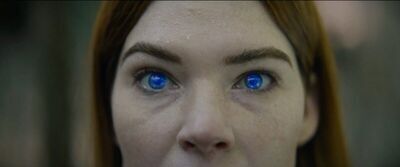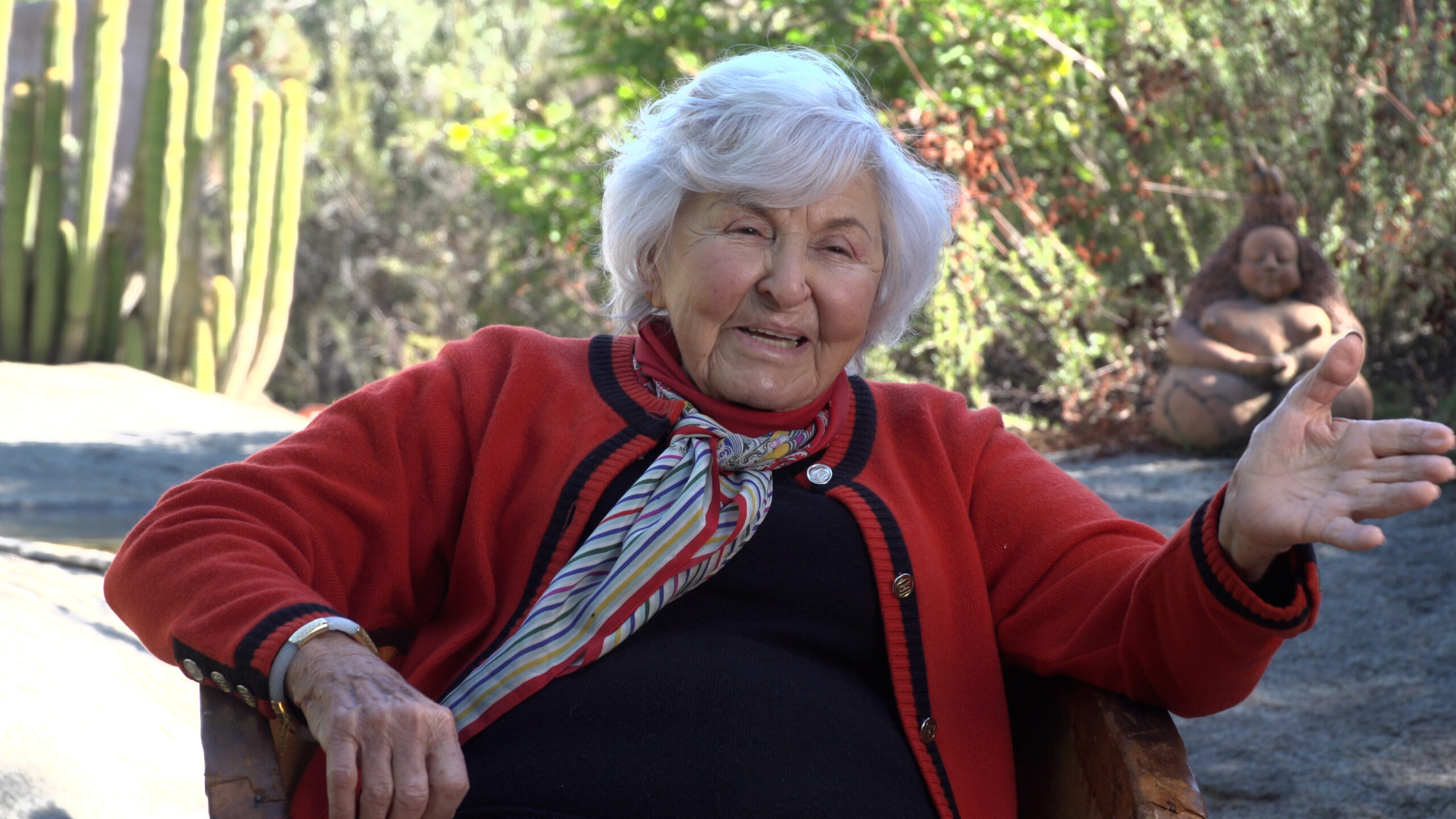

There’s a great high-concept premise at the start of “Consumed,” an otherwise frustrating creature feature about a married couple who go camping and then fall apart. A rift has already formed between Beth (Courtney Halverson) and Jay (Mark Famiglietti) before they set out on a long hike, so tension only continues to grow once they’re attacked by a crazed outdoorsman (Devon Sawa) and what may or may not be a flesh-eating monster.
There’s more than enough situational peril baked into Beth and Jay’s marital problems to sustain a brisk 97-minute runtime, though Sawa’s haunted and generically standoffish antagonist provides a welcome dramatic complication. Still, it’s way more interesting to see Beth realize that she and her partner are no longer in sync, especially given how thoughtlessly overbearing Jay can be.
Beth’s a breast cancer survivor, and Jay doesn’t really know how to talk with her about what she went through. She’s also plagued by nightmarish, PTSD-style images of her body rebelling against her, either during or following a traumatic medical procedure. Jay clearly wants to make Beth feel seen and appreciated but doesn’t seem to understand or be particularly receptive to Beth’s feelings. For him, this trip is a victory lap; for her, it’s maybe the end of their time together. Then, they discover animal tracks filled with what looks like creamed spinach. A bear trap, a monster, and a raft of expository dialogue further complicate matters.
Like a lot of recent trauma-focused horror movies, “Consumed” eventually settles on its most troubled protagonist. The filmmakers’ focus on Beth might not have felt so confining if Jay was either further developed or reduced to a more convincing foil for Halverson to play off of. At first, Jay seems like a real enough problem, especially when he hovers and then smothers Beth with attention. Famiglietti makes it easy for you to believe that this type of well-meaning but unlikable personality might exist, particularly when he tries to make a ritual of burning Beth’s hospital ID bracelet. If you’ve ever been reluctantly admitted to a hospital, you know how difficult it can be to not want to scream at your uncomprehending friends and/or relatives. This preliminary section of “Consumed” credibly evokes that struggle.
Quinn, Sawa’s deranged hunter, then eclipses Jay as the main focus of Beth’s anxiety. He withholds crucial information from Beth and Jay for reasons that are somewhat obvious, but still unfold in their own time. Quinn’s also dealing with his own trauma, as you can see by the way he puffs on Beth’s cigarettes or mutters in sentence fragments. Sawa’s commitment to his role is undeniable, but Quinn never seems more than an obstacle in Beth’s path.
Still, once Quinn shows up, “Consumed” becomes more about surviving a “The Twilight Zone”-worthy threat that’s mostly implied but also occasionally visualized through suggestive, modestly-budgeted creature effects. Fans of Glass Eye Pix founder Larry Fessenden’s horror movies will already be familiar with the voracious fiend at the heart of “Consumed.” However, its identity is never as well considered here as in Fessenden’s soulful low-budget chillers.
Instead, “Consumed” becomes more about the tension between Beth and Quinn, leaving Jay to fade into the background. That sort of shallow focus might have been forgivable in a movie where Beth and Quinn share or at least talk to each other in a way that teases out their respective hang-ups. Unfortunately, the dialogue in “Consumed,” credited to screenwriter David Calbert, focuses more on pushing the plot along than unpacking either Beth or Quinn’s feelings.
It’s always hard to know why on-camera performances don’t play well off of each other, especially when their characters are at cross purposes with each other. Based on what’s on-screen, both “Consumed”’s dialogue and the direction fail to expand on the movie’s distinguishing concern with Beth’s emotional turmoil. Too much conversation weakens the impact of the monster attack scenes that will presumably hook most viewers in the first place. Some pseudo-folksy dialogue also rolls off of Sawa’s tongue like a wad of sandpaper, like when he clocks Beth’s post-cancer infirmity: “You’re sick, ain’t you?” That sort of line needs a bit more context to land properly, and “Consumed” doesn’t have nearly enough padding to make it stick.
A sense of rhythm or frustrated chemistry might have made a difference in “Consumed,” at least enough to stick to the movie’s by-the-numbers conclusion. Unfortunately, clumsy and mostly inert dialogue often pre-emptively steps on Beth and Quinn’s actions, making it even harder to anticipate whatever comes next. It’s also hard to shake the feeling that we’re watching inexperienced or simply ungrounded performers struggling to enhance threadbare material. Some exciting moments are scattered throughout “Consumed,” but they’re never as compelling as the movie’s initial promise.



